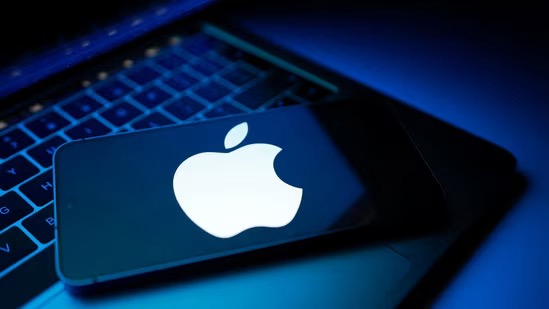Apple Inc. is once again making headlines as it edges closer to becoming the first company in history to reach a $4 trillion market valuation. This latest surge in investor confidence comes in the wake of stronger-than-expected sales for the newly released iPhone 17, a product launch that appears to have reignited enthusiasm for the tech giant’s flagship device and boosted its share price to record levels.
The iPhone 17, launched in September, has quickly become a commercial success, surpassing initial sales forecasts and outperforming its predecessor, the iPhone 16, in several key markets. Analysts and investors alike have responded positively to the robust early demand, which is being driven by a mix of meaningful product upgrades, stable pricing, and pent-up consumer interest following a slower upgrade cycle in previous years.
Strong Demand for iPhone 17
Apple’s iPhone 17 has proven to be a strong performer in both domestic and international markets. The device features a new chip that significantly boosts speed and power efficiency, along with an enhanced camera system, longer battery life, and improved display technology. These upgrades have resonated with consumers, many of whom had held off upgrading in recent years.

Initial demand in key regions such as the United States, China, and parts of Europe has been particularly strong, with several models facing extended shipping times due to limited supply. Apple has reportedly ramped up production to meet the surge in orders, indicating that the company anticipates sustained momentum heading into the holiday season.
Another factor contributing to the sales boost is Apple’s decision to keep the base model pricing unchanged, despite inflationary pressures and rising component costs. This pricing strategy, combined with carrier incentives and trade-in programs, has made it easier for more customers to make the leap to the latest model.
Market Reaction and Soaring Valuation
The excitement around the iPhone 17 launch has not gone unnoticed by the stock market. Apple’s shares have rallied in recent weeks, climbing more than 4% in a single session following the latest sales data. This rally has pushed Apple’s market capitalization to approximately $3.9 trillion—just shy of the historic $4 trillion threshold.
Apple’s near-unprecedented valuation reinforces its status as one of the most valuable and influential companies in the world. The iPhone remains central to Apple’s financial engine, accounting for a significant portion of its revenue. The success of this product cycle suggests that Apple still holds considerable influence over the global smartphone market, even in the face of stiff competition from Android manufacturers and economic uncertainty in some regions.
Beyond the iPhone
While the iPhone 17 is the current star of the show, the broader context of Apple’s business strategy is equally important. The company has been gradually shifting its focus toward a more service-driven model, with growing emphasis on subscriptions, digital content, and ecosystem lock-in.
At the same time, Apple is investing heavily in new technologies, including artificial intelligence and augmented reality. Although the company has not yet released a generative AI product comparable to some of its competitors, it is widely expected that Apple will integrate more AI capabilities into future software updates and hardware products.
The combination of a strong product cycle, forward-looking investments, and a loyal customer base has given investors reason to believe that Apple is entering a new phase of growth—one that extends beyond the iPhone itself.
Risks and Caution Ahead
Despite the current optimism, there are still challenges on the horizon. Reaching a $4 trillion valuation sets a high bar for performance, and Apple will need to continue delivering strong results to justify its elevated stock price. Any sign of slowing sales, supply chain hiccups, or regulatory headwinds could trigger a pullback in investor sentiment.
Moreover, while the iPhone 17’s early success is encouraging, maintaining that momentum through the end of the year and into 2026 will be crucial. Much of the current valuation is priced on the assumption that the new iPhone will drive strong holiday sales and lift Apple’s overall revenue and profit margins.
There’s also the broader macroeconomic environment to consider. Consumer spending remains sensitive to interest rates, inflation, and employment trends. Although Apple’s premium brand and product quality often insulate it from downturns, it is not completely immune to global economic conditions.
In China, one of Apple’s most important markets, the company continues to face both competitive and political challenges. Domestic brands are gaining traction, and tensions between the U.S. and China could impact future growth or supply chain stability.
Looking Forward
Apple is set to release its quarterly earnings later this month, and all eyes will be on the numbers to see if the early iPhone 17 momentum has translated into real financial gains. Investors will also be listening for guidance on holiday season expectations, updates on services growth, and any hints about Apple’s next steps in AI or hardware innovation.
If the momentum continues, Apple could not only break through the $4 trillion valuation milestone but also solidify its lead as the most valuable company in the world. It would also set a precedent for how traditional hardware-based tech firms can evolve into service-driven, software-enhanced giants in the era of digital transformation.
Conclusion
Apple’s approach has always been about blending innovation with execution, and the success of the iPhone 17 underscores its ability to deliver on both fronts. The near-$4 trillion valuation is more than just a number—it represents investor confidence in Apple’s business model, product roadmap, and ability to lead in a rapidly changing tech landscape.
With a strong start to the iPhone 17 cycle, promising growth in services, and a long-term bet on emerging technologies, Apple is once again demonstrating why it remains at the forefront of the global technology industry. Whether it crosses the $4 trillion mark this quarter or next, the company’s direction appears set firmly on a growth path—one that could redefine the boundaries of what’s possible for a publicly traded company.













